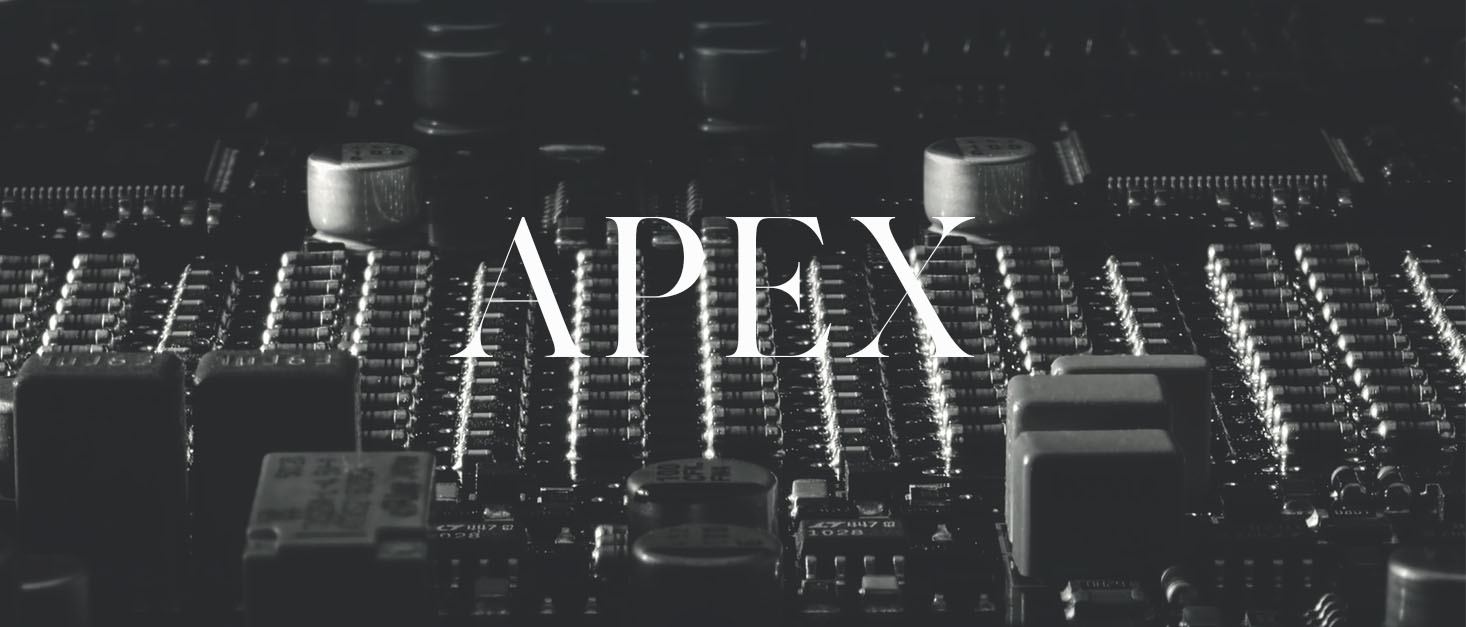
APEX: A Closer Look
With the launch of our Ring DAC APEX hardware, we’ve been able to enhance the performance of the dCS Ring DAC and the musical expression of our Rossini, Vivaldi and Bartók systems. Here, we take a look at the development of APEX, and the various benefits it delivers for listeners
Tags: News, Technology & Innovation, APEX, Design & Craft, Product, Products,The Ring DAC has been an integral part of dCS products for over 30 years. In the 1980s - when dCS was best known for its work in radar and telecommunications - our engineers developed a novel digital-to-analogue conversion system that could be used to process audio signals at 24-bit resolution.
At the time, 24-bit audio was unheard of. This technological breakthrough led us to develop a succession of pioneering high-resolution DACs, ADCs and master clocks for some of the world’s top recording studios and later, to specialise in creating high-end digital playback systems for music lovers, professionals and audiophiles around the world. Over three decades on, the Ring DAC remains a world-leading technological approach to converting 1s and 0s into music. A core part of all dCS DACs, it has earned global acclaim for its technical and sonic performance.
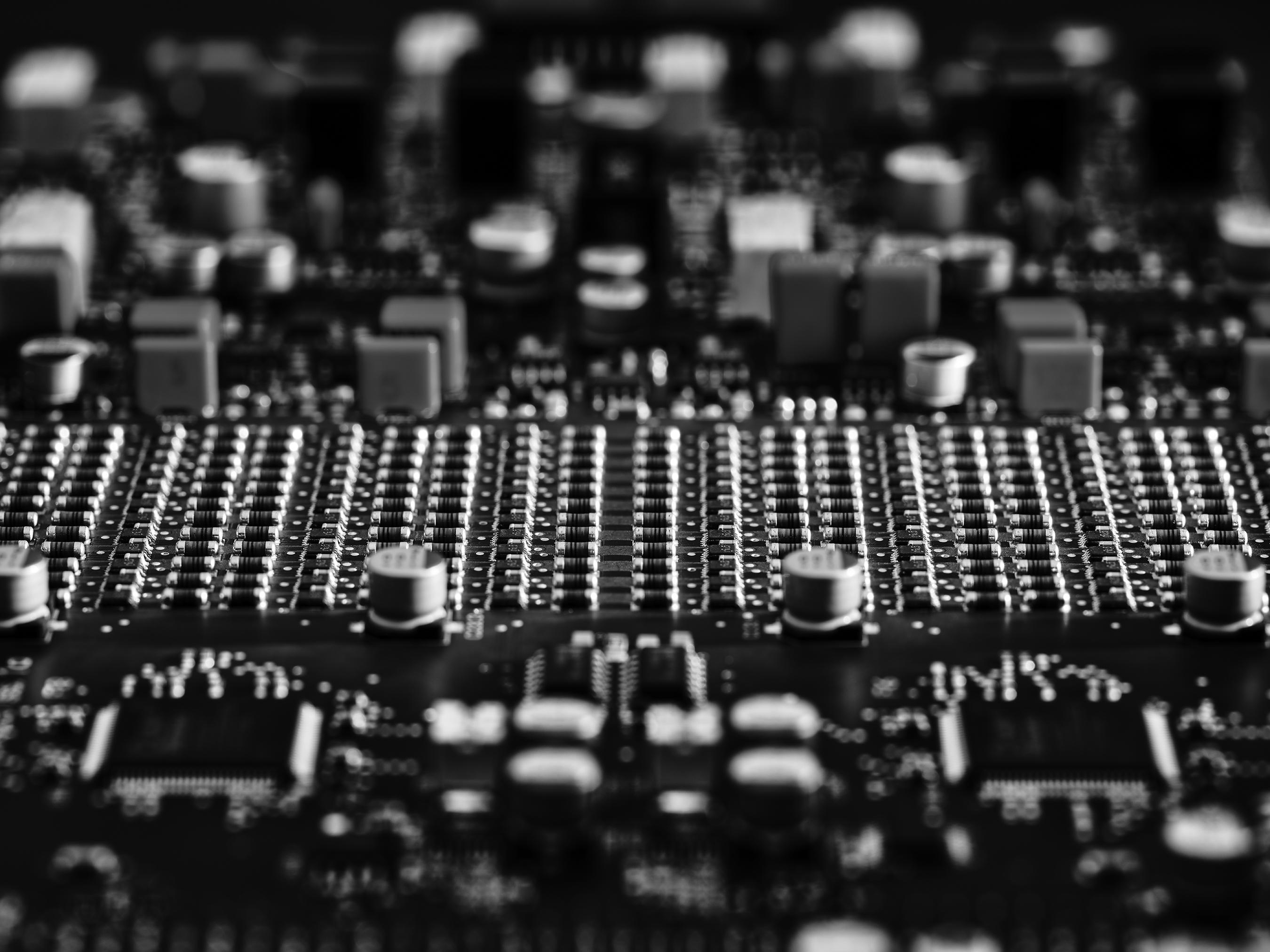
This formidable reputation is the result of constant innovation and development. Throughout the Ring DAC’s life, our engineers have continued to refine and augment its design, making various updates to ensure its performance remains unrivalled. While the fundamental principles that underpin its design haven’t changed, the Ring DAC has become faster, more intelligent, more sophisticated and more advanced with each new generation, and the musical performance of our products has in turn improved with each upgrade we make.
In 2017, we released a major update to the software that controls the Ring DAC, providing additional mapping algorithms that allowed listeners to tailor the performance of their dCS system to best suit their listening preferences, setup, and musical tastes.
Since the release of this update, we’ve continued to explore how we can push the Ring DAC’s design and capabilities even further. In 2021, our Director of Product Development Chris Hales decided to turn his focus to the Ring DAC hardware - in particular, the Ring DAC circuit board and analogue output stage.
"We regularly review the performance [of our products] and look very closely at how things are working and where we might be able to improve them"
A thorough investigation
"At dCS, we regularly review the performance [of our products] and look very closely at how things are working and where we might be able to improve them," explains Chris. "We took some time last year to look very carefully at how [the Ring DAC hardware] was performing, and we found that the performance of the existing analogue board is beyond the capability of most test equipment."
This is a familiar issue for dCS engineers: as our products often exceed the capabilities of conventional test equipment, we’ve had to devise a range of bespoke tools and equipment that allow us to measure each aspect of a system’s performance with absolute precision. If we cannot measure something as accurately or as comprehensively as we’d like, then we often invest in building a new platform or measurement tool from scratch.
"Audio measurement systems [can] introduce noise, or distortion, or limit the frequency response, just like the thing they’re trying to measure, and there can come a point where, even if they’re not dominating what you’re measuring, these artefacts are affecting it one way or another," explains Chris. "A good example is when measuring harmonics, where the second harmonic inherent in the test equipment can cancel with the one in the item you’re trying to measure. This can result in a measurement that is much lower than it should be and one which tends to behave unexpectedly as the performance of the item under test is adjusted."

In the case of the Ring DAC’s analogue performance, we used a method that allowed us to reduce internally generated artefacts. This, in turn, allowed Chris to identify some potential areas for further improvement. The Ring DAC circuit and analogue output stage already delivered an outstanding measured performance, but there were some aspects he felt could perhaps be further refined or reconfigured. After a period of investigation, and an intensive few months experimenting with circuit boards during national lockdowns, he developed some prototype boards to test out his theories.
Once the dCS R&D team had analysed the measured impact of Chris’s proposed revisions, and confirmed that these delivered quantifiable gains (an essential requirement for any dCS software or hardware upgrade), the modified boards were auditioned in a series of listening tests, where our golden-eared music and audio experts reported audible improvements in a range of key areas.
Based on this feedback, the next stage was to commission several rounds of prototype boards for further listening and measurement tests. The feedback and results from these tests confirmed that this new technology was suitable for an enhanced version of the dCS Ring DAC - the Ring DAC APEX - and that we could make it available to both new and existing customers.
An ambitious redesign
The new Ring DAC APEX hardware features several modifications. One of the first areas that Chris looked at during the research and development phase was the reference supply that feeds the Ring DAC circuit board, and this investigation led him to make some significant adjustments. “[The reference supply] has a direct effect on the audio performance and particularly the output impedance of [the Ring DAC] - in effect, how stiff it is.... We found some ways of improving that, and so we applied that, which makes quite a noticeable difference to the performance,” he explains.
In an electrical system, there are external signals that can interfere with our reference voltage, so the lower impedance that reference is, the harder it is for the interference signals to be coupled in.
As Chris points out, the Ring DAC is essentially a multiplying DAC – that is, it multiplies the reference voltage by the DAC code value. Consequently, anything on that reference (such as noise or periodic signals) is coupled directly to the output. For optimum performance, the reference would be a pure DC voltage with no AC components and no noise.
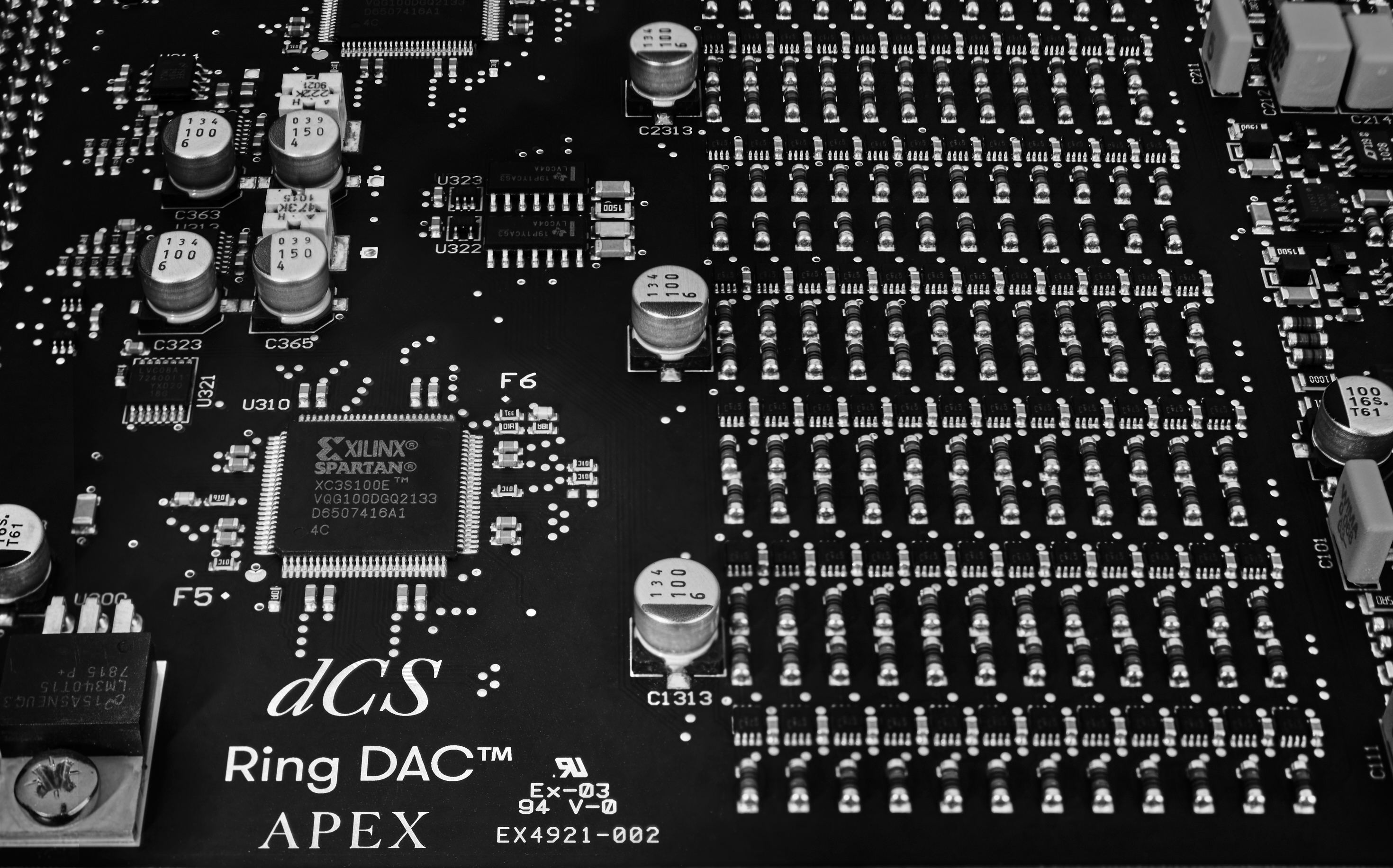
"Imagine, for example, a ruler clamped to a desk," he explains. "If it’s a thin, metal ruler you can easily move the free end. If it’s a thick wooden ruler, it’s much harder. In this analogy, a stiff ruler equates to low output impedance (it’s hard to change the voltage) and the flexible one to a high output impedance (it’s easy to change the voltage)."
“The load represented by the Ring DAC changes with the signal - this is analogous to changing how hard you press the end of the ruler - and as a result, the reference voltage will change in response to the signal in proportion to the reference’s impedance,” he adds. “This couples to the output one way or another (in some cases as additional harmonics), so keeping the output impedance low minimises the voltage variation and thereby the extra stuff on the output.”
Chris also carried out a thorough examination of all subsequent stages of the Ring DAC, including the summing and filter stages. “There were a few enhancements we were able to identify there and put in - for example, to improve the symmetry of the summing stages - and finally, we had a good look at the output stage,” he adds.
"The purpose of the output stage is primarily to interface us to what is unknown territory once we leave the dCS realm"
The Ring DAC output stage is responsible for buffering the analogue signals generated by the Ring DAC. As Chris explains, the analogue board of the Ring DAC is made up of both digital stages and analogue stages. The digital stage takes the data that’s fed from the dCS Digital Processing Platform, and subjects it to a mapping function. This drives the 48 latches which form the heart of the Ring DAC. The output of those latches is then summed by an operational amplifier summing stage, where it’s filtered to get rid of very high frequency components, before being buffered by an output stage.
"The purpose of the output stage is primarily to interface us to what is unknown territory once we leave the dCS realm," says Chris. "We really don’t have much control over what cables people are going to connect, what external equipment people are going to connect, and these can have very different input characteristics, so it’s important to have an output stage which is capable of driving lots of current, that’s not sensitive to stability problems that these may cause."
In most audio setups, dCS DACs are connected to a cable, and then an amplifier or preamplifier. The cable will have capacitance, resistance, and inductance. Different cables will have different amounts of each and may have additional ‘matching networks’.
"It was a very worthwhile improvement, although we [were] already looking at harmonics which are 110, 120dB below the fundamental"
"The input of the amplifier/preamplifier will have capacitance and resistance, but may also require a DC bias current," says Chris. "Additionally, balanced input stages vary enormously (not being balanced at all in some extreme cases). If we were to connect these directly to the DAC summing stage, we would have to design it in such a way that it would no longer be optimised as a DAC summing stage. The solution, then, is to isolate the summing stage from the outside world so that we can optimise the performance of the summing stage and drive the enormously uncertain loads that cable and amplifier combinations can present."
"Capacitance constitutes a load on the output stage and that equates to a current draw and one that increases at high frequencies," Chris adds. "If we want to reduce the high frequency roll-off that can cause, we need to present a low output resistance but also have enough current available to drive that capacitance without distortion. Likewise, amplifier input resistance can vary a lot and if it is unusually low, will require high current to drive it, and will benefit from being driven from a low impedance. In this way, our output stage makes the overall DAC performance much more consistent (ie stable) when used in different systems."
Other changes made to the Ring DAC’s hardware include replacing individual transistors on the Ring DAC circuit board with a compound pair, and adjusting the layout of components on the Ring DAC circuit board. The result of these various adaptations is a new, enhanced board that is even quieter than previous iterations, and over 12dB more linear.
"It was a very worthwhile improvement, although we [were] already looking at harmonics which are 110, 120dB below the fundamental - so a large improvement, but performance was extremely good to start with," adds Chris.
"Great audio should draw you in, engage with you and excite you, and I think APEX does that in spades. It has everything we think is synonymous with dCS"
Setting a new standard
For listeners, this enhanced technical performance has resulted in a range of sonic improvements, as evidenced in our subjective listening tests.
The feedback from listening sessions with our Ring DAC APEX prototypes was hugely positive, with listeners noting enhanced resolution, dynamics, rhythm and timing, an even greater sense of ease and naturalness, more precise and tonally resolved voices, and more realistic timbral quality of strings, among other benefits. Whilst each listener’s experience is unique, and depends on their audio setup, chosen music and the wider environment in which they listen, the consensus from several rounds of testing was that APEX allowed us to deliver an even more compelling and absorbing musical experience.
"I think it just felt right - when we got to that final board, and we’d been through all those final rounds of testing, there was just something about it," says David Steven, MD at dCS. "Great audio should draw you in, engage with you and excite you, and I think APEX does that in spades. It has everything that we think is synonymous with dCS: there’s detail, there’s resolution, but it’s also just emotionally involving.... It’s an amazing achievement from the team to take what was already state-of-the-art and not just improve it on the measured performance level, but to bring something that you can feel and hear."
"I think it’s very much [part of] our philosophy to realise improvements when we can.... Continual improvement is something we take very seriously"
Constant evolution
Improving a hardware platform that already delivers a class-leading performance is no easy feat, but the latest Ring DAC APEX hardware is testament to what can be achieved through rigorous analysis, creative thinking and continual product development. “I think it’s very much [part of] our philosophy to realise improvements when we can,” adds Chris.
“Continual improvement is [something] we take very seriously - I think we feel that we owe it to our customers to do the best we can, and I think that those of us who are working on the technical side of things, are also just of that personality where we just want to improve things all the time.... For whatever reason, there’s a huge philosophy of, ‘if we can make it better then let’s do that - it’s worth the effort’.”
This continual development is driven not just by our engineers’ innate curiosity and desire to constantly improve, but our wider ambition to ensure that dCS products deliver the finest possible performance. As David and Chris both note, it’s not a case of innovating for innovation’s sake but rather, making improvements and gains that will enhance our customers’ experience of listening to their favourite artists and recordings.
To achieve this, our engineers must draw on a range of measurement techniques, experience and data, as well as subjective feedback. As dCS Technical Director Andy McHarg points out, “One of the great challenges in hi-fi is correlating certain measurements to certain sonic characteristics” - and it’s not a straightforward case of enhancing one aspect of a product’s technical performance in order to improve the sound in a particular area.

While our engineers know that improving certain technical dimensions should lead to an improvement in sound, they also know that making technical improvements can sometimes have an unexpected or unintended impact on the overall performance of a product. It’s for this reason that subjective listening tests play such an important role in product development at dCS.
Using their extensive experience, the dCS engineering team is able to interpret the subjective feedback we receive from each round of listening tests, and understand where or how their work might need to be adapted in order to deliver an outstanding experience for dCS customers (and a class-leading technical performance).
Through conducting several rounds of listening tests and performance reviews, with further development after each round, we are able to ensure that an upgrade such as APEX delivers an actual, notable benefit for listeners, and avoid the pitfalls of improving performance in one area at the expense of another.
This process can take several months and sometimes years, but in the case of APEX, it has allowed us to further improve a renowned dCS innovation. This in turn, has enabled us to enhance the musical abilities of our much-loved Rossini and Vivaldi systems, and - from 2023 - the dCS Bartók.
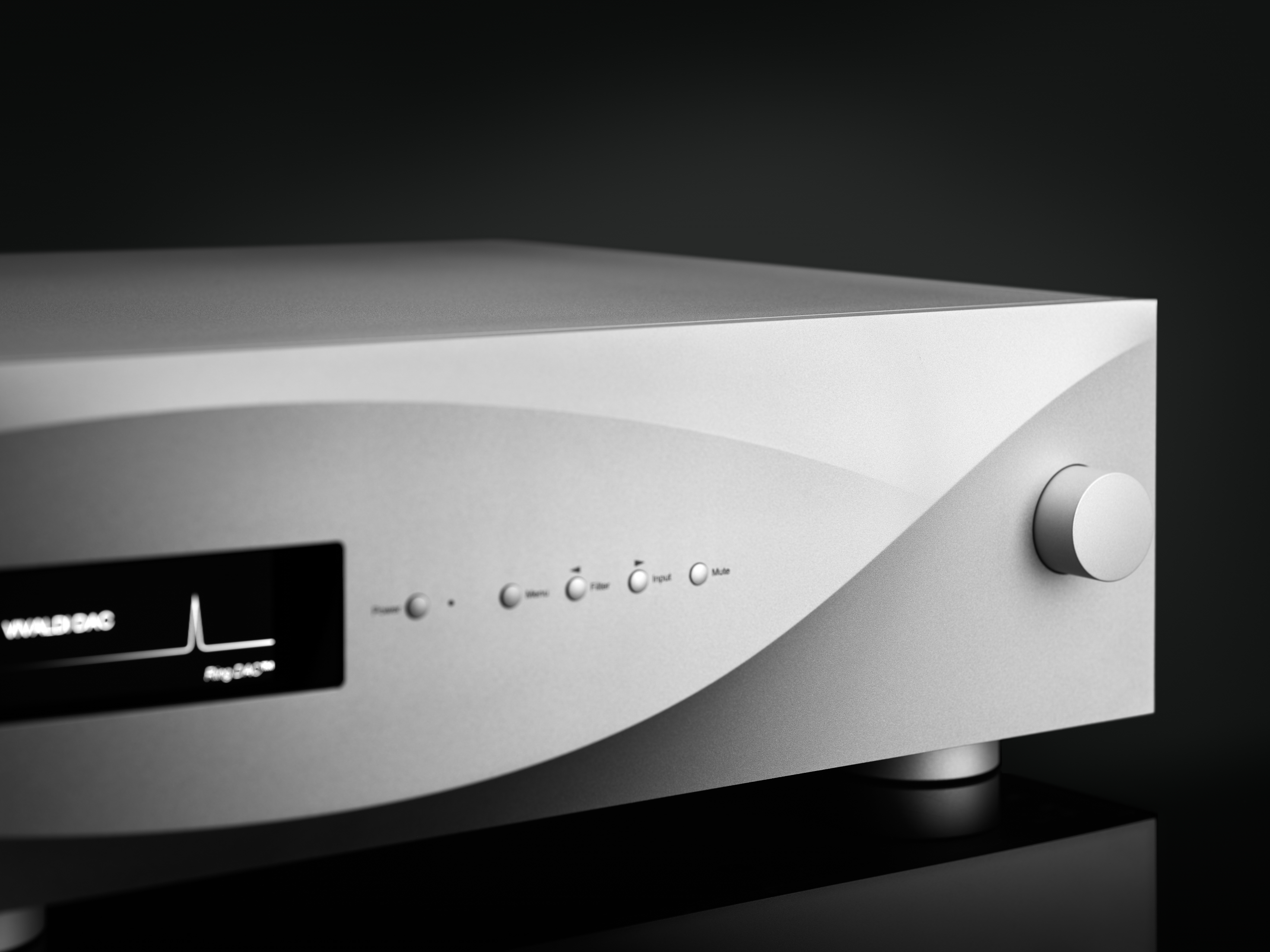
The new Ring DAC APEX hardware is available to both new and existing dCS customers. New APEX editions of the dCS Vivaldi DAC, Rossini DAC, Rossini Player, and dCS Bartók feature the new Ring DAC APEX hardware as standard. Existing Vivaldi DAC, Vivaldi One, Rossini DAC, Rossini Player and Bartók owners can upgrade their system through a global programme run in partnership with our network of expert distributors and retailers.
The launch of the upgrade programme reflects our longstanding commitment to ensuring that dCS products deliver a state-of-the-art experience throughout their lifespan, and that our customers are able to benefit from our latest innovations and advancements. We know that dCS products are an investment, and we strive to reward that investment through sharing new features and platforms as and when these are released, whether it’s a bespoke software platform that enhances headphone optimisation, a major update to the dCS Ring DAC’s mapping algorithm, or a new, improved circuit board. This is something we’ve done throughout our time in audio, from the days of the dCS Elgar, through to the Paganini and Puccini years, and it’s something we’ll continue to do.
"In terms of who we are, and what we’re about as a company, the fact that we can spin out a new Ring DAC and offer it as a hardware upgrade to existing customers is something we feel quite strongly about: we believe our products should have a long lifecycle, they should improve through the life of the products, and I think APEX is a fantastic example of that," David explains.
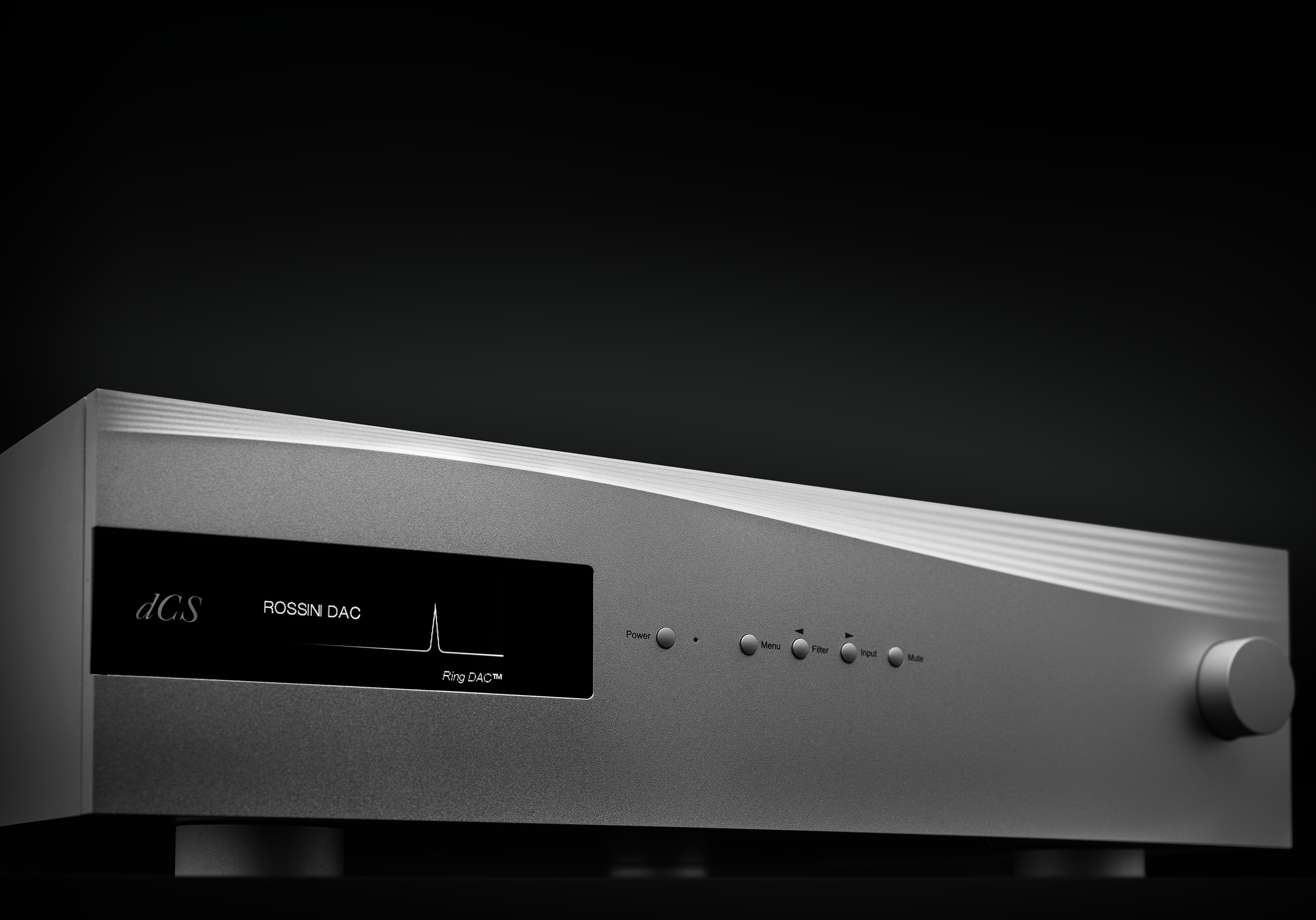
Audio and entertainment is a fast-moving industry, with products often becoming obsolete, or decreasing in quality and relevance as they age. By constantly exploring how we can enhance the performance of our systems, however, and releasing upgrades whenever we make a new development or breakthrough, we aim to create world-leading products that improve with time. As David notes, one of the most rewarding aspects of our work is being able to deliver enhancements that exceed people’s expectations, and give them an even deeper appreciation for the music they love. And this is what we set out to achieve with APEX.
"What really spurs us on is real customer feedback," he adds. "We saw when we did the mapper update, that was a game changer for some people. [In terms of] what their system revealed and how they connected with their music, it was another level, and I believe APEX will do the same again."
Read the latest APEX product reviews here.
Ready to experience APEX for yourself? Use our Dealer Locator tool to find a dCS retailer in your region.












